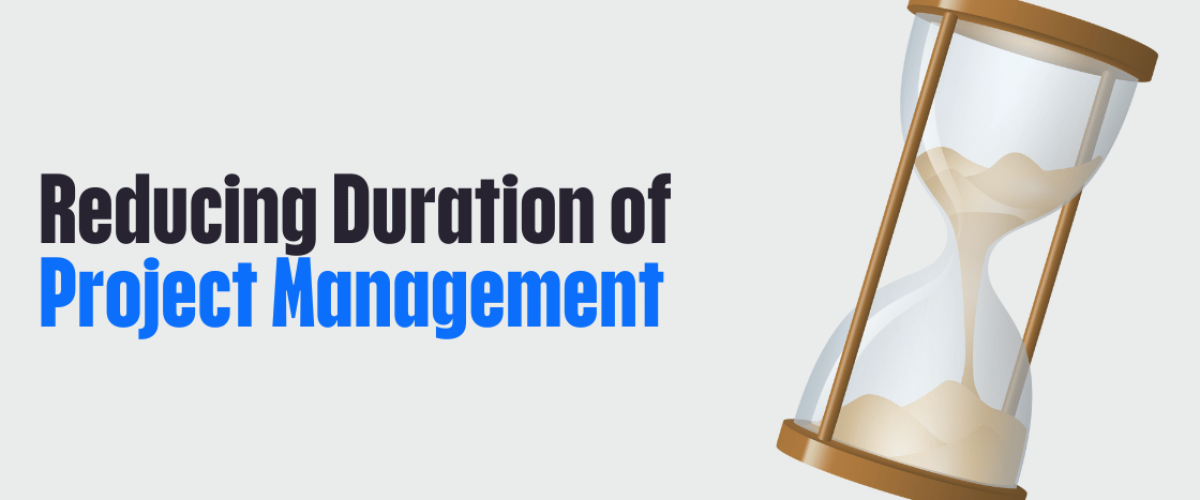Introduction
Reducing the Duration of Project Management can be challenging, especially when you want to finish the project quickly and maintain quality. Research shows almost 70% of projects get delayed, which makes businesses lose a lot of time, money, and resources. Project duration plays a big role in the success of any project, but shortening timelines can sometimes lead to issues like cutting corners or increasing costs.
This guide will explore strategies to reduce project duration while keeping everything on track. You’ll learn how to complete projects faster without compromising on quality.

Find Out The Critical Path
The critical path is the sequence of tasks that determines how long a project will take. Any delay in tasks on this path can delay the whole project, making it crucial to manage carefully.
Identifying the critical path helps you understand which tasks need the most attention. Using tools like Gannt charts, network diagrams, or the Critical Path Method (CPM), you can find this sequence and focus on reducing project duration.
Techniques like fast-tracking, where tasks are done simultaneously, or crashing, which adds more resources to speed up tasks, can help you shorten the timeline effectively.
Leveraging Agile Methodologies
Agile methodologies enable teams to be flexible and adapt quickly to changes, making it easier to shorten project timelines. Using practices like Scrum and Kanban, teams can break down projects into smaller, manageable parts and keep everything on track using agile methodologies.
Scrum focuses on delivering work in short cycles called sprints, allowing for regular feedback and adjustments, which helps in reducing the Duration of Project Management. Meanwhile, Kanban uses visual boards to manage tasks, ensuring that work flows smoothly from start to finish.
This approach boosts efficiency and allows teams to quickly respond to changes, keeping the project aligned with goals and on schedule.
Effective Resource Management
Managing resources effectively is key to finishing projects on time. Effective resource management ensures that the right people are assigned the right tasks and that workloads are balanced to avoid burnout.
Project management tools like KolApp, Asana, and Microsoft Project help track real-time progress, allowing teams to identify and resolve delays early. These tools provide features like task assignments, progress tracking, and workload management. This approach supports a smoother workflow and helps achieve project-shortened timelines and better overall productivity.
You might also like: Top 10 Project Management Software 2024
Reducing Scope Creep
Scope creep occurs when extra tasks are added to the project, causing delays. Keeping the project focused on its original goals is essential to ensure reduced project duration.
Strategies To Prevent Scope Creep
- Clear Project Deliverables: Setting clear goals at the start ensures everyone knows what needs to be done, helping to prevent delays.
- Regular Scope Reviews: Regular checks help keep the project on track and avoid unnecessary changes.
- Strong Change Control Processes: Any changes should be carefully reviewed to avoid impacting the schedule.
Enhancing Communication Across Teams
Communication is vital for any project because it helps everyone stay on the same page. Effective communication can reduce project duration by improving teamwork and problem-solving.
To enhance communication, create a clear communication plan that outlines goals, methods, and how often to check-in. Use collaborative tools like chat apps and shared documents to keep everyone connected.
Regular check-ins ensure that progress is tracked and challenges are addressed quickly, helping to keep the project on track and improving project management implementation.
Improving communication ensures projects run smoothly and efficiently. It keeps the team motivated, quickly identifies and solves problems, and maintains stakeholder trust. Clear communication also reduces the chances of project delays.
Implementing Risk Management Early On
Identifying risks early is key to avoiding delays and keeping your project on track. By planning for potential problems before they arise, you can use schedule compression techniques and maintain project timelines.
Start by conducting regular risk assessments, brainstorming with your team, and using risk checklists tailored to your project type.
For example, plan for weather delays in construction by reviewing timelines regularly. In software development, monitor industry trends to anticipate changing client needs.
Additionally, having contingency plans and buffer times in place ensures that you can quickly adapt to any challenges, helping the time project manager stay on schedule and ensuring smoother project execution.
Real-Life Example Of Successful Project Time Reduction
Real-life examples Of Successful Project Time Reduction can be seen in the case of a tech company that used project management tools like Asana and Trello to streamline its software development process.
The team could quickly identify and fix delays by assigning tasks to the right people and monitoring real-time progress. They balanced workloads effectively to avoid burnout and made adjustments as needed.
This approach helped them schedule their project timelines significantly and improve overall productivity, demonstrating how strategic resource management and effective tools can lead to successful project time reduction.
Conclusion
In conclusion, we hope these guides remain beneficial for you to understand that Reducing the duration of project management is possible with the right strategies. By focusing on the critical path, using Agile methods, managing resources well, preventing scope creep, enhancing communication, and planning for risks, you can complete your projects faster without sacrificing quality. Apply these strategies to see your project shortened and success rates grow.
Try KolApp
Free 14 Day Trial
Table of Contents
Subscribe to our Newsletter
Subscribe to our newsletter and stay updated!

